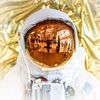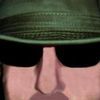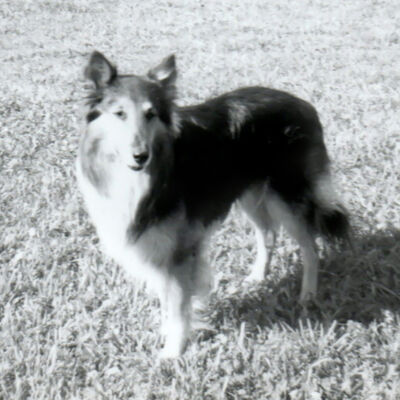Shooting Raw
Jan 15, 2014 15:44:35 #
Jan 15, 2014 16:15:28 #
mdorn wrote:
LOL. Since everyone shoots raw (if you use digital) regardless, I'm wondering who you are talking about? :-)
I get what you're saying and I think you understand what I'm saying. I'm talking about the people who say that you should do everything within the camera, which is after all a very limited computer. I think that their ancestors probably refused to use the wheel because they saw it as cheating.
Jan 15, 2014 16:55:58 #
FredB wrote:
Well, actually, your thoughts are incorrect. br b... (show quote)
However, if your camera doesn't allow you to capture the RAW file and provides you only with a JPG, then you have no RAW file. And there's no way you're going to get a RAW file. I can set my Canon to JPG only, and there's no way it's going to give me a RAW file. I think that's pretty simple. Not sure why you're not understanding it.
Jan 15, 2014 17:22:41 #
amehta
Loc: Boston
mdorn wrote:
Is this your opinion, or is it fact? I really don't know. Did you or do you work for a camera mfg?
amehta wrote:
Conforming to the part which throws out data is a lot easier than conforming to the part which represents the true sensor technology.
Is this your opinion, or is it fact? I really don't know. Did you or do you work for a camera mfg?
Basically everything is an opinion, things we call "facts" have to be qualified. :-)
Software (the processing engine) will take the input (sensor data) and produce an output (either the raw file or the jpeg file). With the jpeg the output is significantly different than the input, so the engine is already doing a lot to convert it. Changing the input a little means the engine has to change, but it's overall task is not more difficult. With the raw output, the engine is told to not do anything. But if the input changes, while the output structure does not, there can be a problem if the input structure no longer fits within the requirements of the output structure.
Jan 15, 2014 18:47:35 #
amehta wrote:
Basically everything is an opinion, things we call... (show quote)
I'm sorry we got off track. If this is your attempt at qualifying the difficulty of camera mfg's to use and adopt DNG, then I accept it only because your explanation was not 'G' rated and my son was standing behind me while reading it... <joke>.
I still don't believe the difficulty Nikon and Canon have supporting DNG is that the standard is too difficult to integrate or scale from an engineering perspective. Intel came out with a 64-bit processor way before 64-bit OSs and applications were readily available, yet 32-bit OSs and apps run just fine on a 64-bit hardware platform because of something called 'backward compatibility'. We now make multi-core processors, and they are also backward compatible with apps written for single core instructions.
My point, or my opinion is that these two players refuse to support DNG for selfish reasons, not engineering ones. I think Fred got it right when he said "it doesn't really cost them any money NOT to" and that "there's no overriding reason to change".
Jan 15, 2014 19:34:47 #
Raw vs. Jpeg
Raw is the unedited image as taken with the settings you have set in your camera prior to taking the picture; WB, Exposure, etc.
Jpeg is the edited image as taken with the in-camera adjustments made; WB, Exposure, Sharpening, Noise Reduction, Contrast, etc. and then compressed and converted to 8 bit.
I like to think of it as baking a cake:
With Raw all of the ingredients are provided separately and you have to mix and bake it. You have the ability to add another egg or more sugar if you think you need it.
With Jpeg the cake mix is already mixed together in unknown quantities, you can't un-mix it and make changes so you are stuck trusting the maker of the mix.
I use both but primarily I Shoot RAW. There are times where I trust the scene or I want quick output and will shoot Jpeg but since I use Lightroom 5 editing in Raw or jpeg is the EXACT SAME WORK FLOW. With Raw I get the benefit of more initial information to work with and more latitude for corrections if a shot was off or the lighting was tricky.
The cost for shooting Raw is larger files but with memory as cheep as it is today and computers as powerful as they are it has not been a problem.
The file type used is a really stupid way to judge others as photographers, I prefer to use the final output. Shoot Raw, Shoot Jpeg, makes no matter to me your art is YOUR art.
Raw is the unedited image as taken with the settings you have set in your camera prior to taking the picture; WB, Exposure, etc.
Jpeg is the edited image as taken with the in-camera adjustments made; WB, Exposure, Sharpening, Noise Reduction, Contrast, etc. and then compressed and converted to 8 bit.
I like to think of it as baking a cake:
With Raw all of the ingredients are provided separately and you have to mix and bake it. You have the ability to add another egg or more sugar if you think you need it.
With Jpeg the cake mix is already mixed together in unknown quantities, you can't un-mix it and make changes so you are stuck trusting the maker of the mix.
I use both but primarily I Shoot RAW. There are times where I trust the scene or I want quick output and will shoot Jpeg but since I use Lightroom 5 editing in Raw or jpeg is the EXACT SAME WORK FLOW. With Raw I get the benefit of more initial information to work with and more latitude for corrections if a shot was off or the lighting was tricky.
The cost for shooting Raw is larger files but with memory as cheep as it is today and computers as powerful as they are it has not been a problem.
The file type used is a really stupid way to judge others as photographers, I prefer to use the final output. Shoot Raw, Shoot Jpeg, makes no matter to me your art is YOUR art.
Jan 15, 2014 20:47:29 #
The RAW vs JPEG controversy reminds me of tongue-in-cheek question I was heard. A guy I working with asked, How do you tell if someone is an engineer? I responded that I didnt know. He then said, If you ask them what time it is and they tell you how to build a watch. In this corporeal world I believe in differences I can perceive and appreciate. RAW isnt one of them. But, hey, Im sure glad its there for those who can. 8-)
Jan 16, 2014 02:43:57 #
GaryS1964
Loc: Northern California
A picture is worth a thousand words. In this case three pictures. Below are three pictures. The first is the JPEG as it came out of the camera. The second is my attempt to make legible the words over the door using the JPEG that came out of the camera. The last one is a JPEG produced from the original RAW image again processed to make the words over the door legible. Had this photo had some real meaning to me I think I would have had a much better chance of turning it into a decent JPEG by starting with the RAW image rather than the JPEG image. And that's why I shoot RAW+JPEG. So I have a better shot at fixing JPEGs that didn't turn out as expected.
Original JPEG
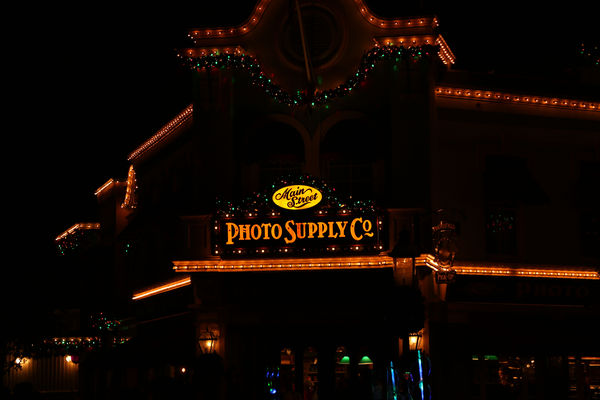
(Download)
JPEG base on original JPEG
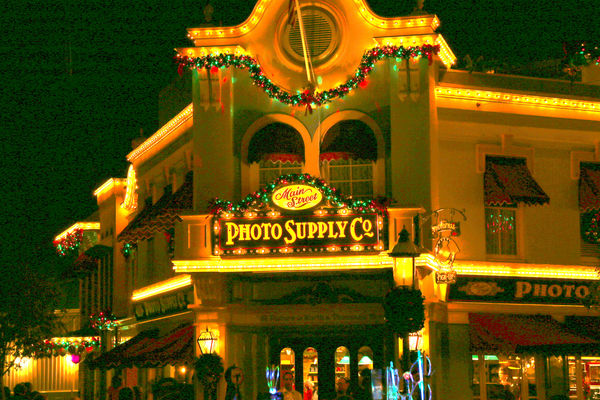
(Download)
JPEG based on original RAW
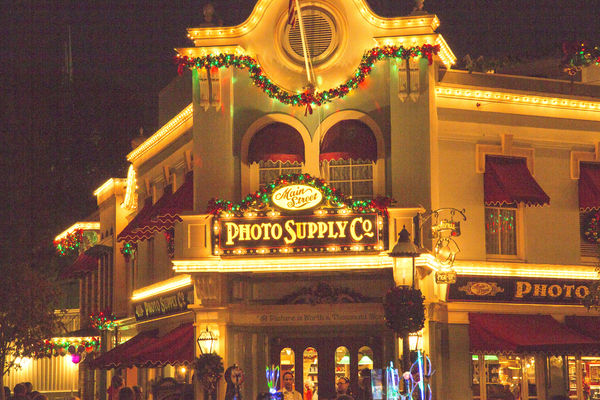
(Download)
Jan 16, 2014 09:41:21 #
Just thought Id mention that A picture is worth a thousand words. is actually a misquote of a Chinese streetcar ad, which reportedly said ten thousand word. Personally, I much prefer the original JPEG.
Jan 16, 2014 10:30:48 #
FredB
Loc: A little below the Mason-Dixon line.
russelray wrote:
I understand it completely. I never said you could always "get" a raw file. I corrected a mistaken impression that a sensor would create a JPEG file without having a raw file in the interim. As I noted, if you don't WANT a raw file, or your particular camera doesn't give you an option to save one, that does not infer that one does not get created by the camera. It's just not apparent to you. Re-read my post. There is no sensor in the world that creates a JPEG file straight-away. Just doesn't happen.However, if your camera doesn't allow you to capture the RAW file and provides you only with a JPG, then you have no RAW file. And there's no way you're going to get a RAW file. I can set my Canon to JPG only, and there's no way it's going to give me a RAW file. I think that's pretty simple. Not sure why you're not understanding it.
Jan 16, 2014 10:35:32 #
[quote=Linda From Maine]Give Picasa a try. Be sure to include the file type under "options." Here are the current raw files it supports.
Picasa is free from Google: http://picasa.google.com
Adobe (.DNG)
Canon (.CRW, .CR2)
Casio (.RAW)
Fuji (.RAF)
Hasselblad (.3FR)
Kodak (.DCR, .KDC)
Leica (.DNG and .RAW)
Minolta (.MRW)
Nikon (.NEF, .NRW)
Olympus (.ORF)
Panasonic (.RAW, .RW2)
Pentax (.PEF)
Ricoh (.DNG)
Samsung (.DNG)
Sigma (.X3F)
Sony (.SRF,.SR2)[/q
sony [arw] also
Picasa is free from Google: http://picasa.google.com
Adobe (.DNG)
Canon (.CRW, .CR2)
Casio (.RAW)
Fuji (.RAF)
Hasselblad (.3FR)
Kodak (.DCR, .KDC)
Leica (.DNG and .RAW)
Minolta (.MRW)
Nikon (.NEF, .NRW)
Olympus (.ORF)
Panasonic (.RAW, .RW2)
Pentax (.PEF)
Ricoh (.DNG)
Samsung (.DNG)
Sigma (.X3F)
Sony (.SRF,.SR2)[/q
sony [arw] also
Jan 16, 2014 10:42:38 #
FredB
Loc: A little below the Mason-Dixon line.
fotohouse wrote:
Almost. The raw image is just that - raw. No attention is paid to the WB, contrast, saturation, or any other setting on your camera. Those settings affect ONLY the JPEG image. As such, they will be taken into effect for the JPEG thumbnail that you see when you peer at your LCD after the shot, or open the raw file in Windows Explorer or such. The raw data IS dependent on absolutes such as ISO and exposure settings, however.Raw vs. Jpeg
Raw is the unedited image as taken with the settings you have set in your camera prior to taking the picture; WB, Exposure, etc.
Raw is the unedited image as taken with the settings you have set in your camera prior to taking the picture; WB, Exposure, etc.
Some people seem to be having a real problem accepting the fact that the raw image has NO, repeat NO in-camera processing applied to it whatsoever. It contains no human-readable or human-recognizable information. It is only when a very slightly cooked JPEG image is extracted from the raw file for LCD viewing, etc that you see what you think is a "raw" file. But even that is not the real raw file. It's a JPEG thumbnail. If you create, for example a "raw+JPEG" pair, the "raw" part of it is like a default conversion according to the sensor mfg's luminance handling algorithm, and the "+JPEG" part of it is (FINALLY!) what your camera's "White Balance" and "Saturation" and "Contrast" and all those other settings, produce from the original raw data. Depending on manufacturer, it may also be that if you specify "raw+JPEG", the image you see as the "raw" image has the cooked JPEG inserted, as opposed to a basic thumbnail that you would see if you select "raw" only.
If your camera does not offer a "raw" save option, that does not mean that your sensor does not produce a raw file. It simply means that the raw data is thrown away after creating your JPEG output.
Jan 16, 2014 10:52:58 #
GaryS1964 wrote:
A picture is worth a thousand words.....
Gary, did you mix up the two pictures? On my screen, the jpg looks a lot better than the raw. This does not contradict my experiences with raw, in that I have to work hard to get my raw files up to the quality of my jpgs.
This is true in spades when my photos are properly, or close to properly exposed. When I screw up the exposure as in your photo, I generally am amazed at how much I can bring back a jpg, but while perhaps not as well as a raw, once you get passed 2 stops of error, raw or jpg the picture is usually junk for anything other than a historical record of something you cannot re-photograph.
Fortunately with todays camera's it's pretty easy to get decent enough exposure for a jpg unless you forget to change settings and don't pay attention to what your camera is telling you, usually with beeps, flashing screens and so on. This happens to us all I reckon, but for me, not often enough to bother with Raw files, and my pictures are rarely all that important, or I have 10 others that are exposed well of the same thing.
Your mileage of course may vary
Jan 16, 2014 11:03:46 #
Wellhiem wrote:
I would agree with that, but there are a lot more people, or at least more vocal people, who insist that shooting RAW, is not real photography.
I would agree with that, but there are a lot more people, or at least more vocal people, who insist that shooting RAW, is not real photography.
I think a lot of folks think your not a real photographer unless you shoot raw, and they have the t-shirts to prove it. I've not yet seen a t-shirt proclaiming "I Shoot Jpeg"
Jan 16, 2014 11:13:55 #
fotohouse wrote:
The file type used is a really stupid way to judge others as photographers, I prefer to use the final output. Shoot Raw, Shoot Jpeg, makes no matter to me your art is YOUR art.
This is certainly true. Nobody interested in the final product has ever asked me what format I PP'd it with. Yet there are a few arrogant voices out there who think whatever great shot you produce in JPEG could have been made better by using raw. The truth is there are photos that can be improved upon by PP raw, but there are others that can't. Blanket statements like this expose narrow mindedness.
If you want to reply, then register here. Registration is free and your account is created instantly, so you can post right away.
